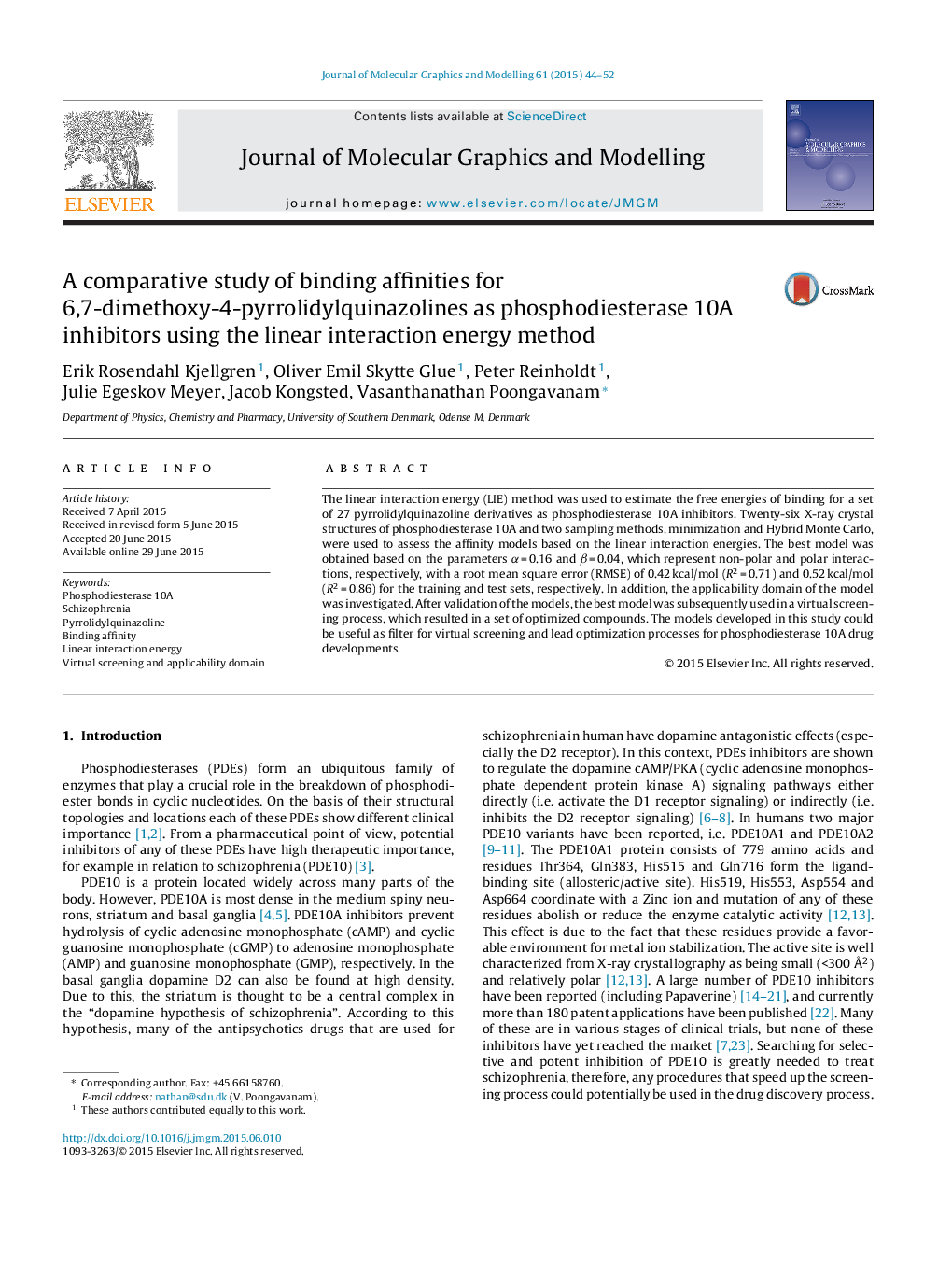| Article ID | Journal | Published Year | Pages | File Type |
|---|---|---|---|---|
| 443450 | Journal of Molecular Graphics and Modelling | 2015 | 9 Pages |
•Binding affinity models based on the linear interaction energy (LIE) scheme were built for PDE10 inhibitors.•The best model was obtained based on the 4HEU structure with an RMSE of 0.52 kcal/mol (R2 = 0.86) for the test set.•The applicability domain was investigated.•Use of the best models guided a similarity search resulting in interesting new hits for further lead optimization.
The linear interaction energy (LIE) method was used to estimate the free energies of binding for a set of 27 pyrrolidylquinazoline derivatives as phosphodiesterase 10A inhibitors. Twenty-six X-ray crystal structures of phosphodiesterase 10A and two sampling methods, minimization and Hybrid Monte Carlo, were used to assess the affinity models based on the linear interaction energies. The best model was obtained based on the parameters α = 0.16 and β = 0.04, which represent non-polar and polar interactions, respectively, with a root mean square error (RMSE) of 0.42 kcal/mol (R2 = 0.71) and 0.52 kcal/mol (R2 = 0.86) for the training and test sets, respectively. In addition, the applicability domain of the model was investigated. After validation of the models, the best model was subsequently used in a virtual screening process, which resulted in a set of optimized compounds. The models developed in this study could be useful as filter for virtual screening and lead optimization processes for phosphodiesterase 10A drug developments.
Graphical abstractFigure optionsDownload full-size imageDownload high-quality image (219 K)Download as PowerPoint slide
